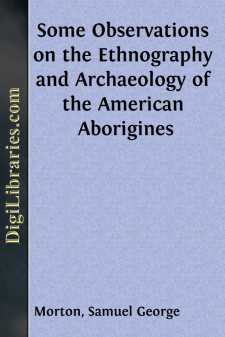Categories
- Antiques & Collectibles 13
- Architecture 36
- Art 48
- Bibles 22
- Biography & Autobiography 813
- Body, Mind & Spirit 142
- Business & Economics 28
- Children's Books 14
- Children's Fiction 11
- Computers 4
- Cooking 94
- Crafts & Hobbies 4
- Drama 346
- Education 46
- Family & Relationships 57
- Fiction 11829
- Games 19
- Gardening 17
- Health & Fitness 34
- History 1377
- House & Home 1
- Humor 147
- Juvenile Fiction 1873
- Juvenile Nonfiction 202
- Language Arts & Disciplines 88
- Law 16
- Literary Collections 686
- Literary Criticism 179
- Mathematics 13
- Medical 41
- Music 40
- Nature 179
- Non-Classifiable 1768
- Performing Arts 7
- Periodicals 1453
- Philosophy 64
- Photography 2
- Poetry 896
- Political Science 203
- Psychology 42
- Reference 154
- Religion 513
- Science 126
- Self-Help 84
- Social Science 81
- Sports & Recreation 34
- Study Aids 3
- Technology & Engineering 59
- Transportation 23
- Travel 463
- True Crime 29
Some Observations on the Ethnography and Archaeology of the American Aborigines
Categories:
Description:
Excerpt
Nothing in the progress of human knowledge is more remarkable than the recent discoveries in American archæology, whether we regard them as monuments of art or as contributions to science. The names of Stephens and Norman will ever stand preëminent for their extraordinary revelations in Mexico and Yucatan; which, added to those previously made by Del Rio, Humboldt, Waldeck and D’Orbigny in these and other parts of our continent, have thrown a bright, yet almost bewildering light, on the former condition of the western world.
Cities have been explored, replete with columns, bas-reliefs, tombs and temples; the works of a comparatively civilized people, who were surrounded by barbarous yet affiliated tribes. Of the builders we know little besides what we gather from their monuments, which remain to astonish the mind and stimulate research. They teach us the value of archæological facts in tracing the primitive condition and cognate relations of the several great branches of the human family; at the same time that they prove to us, with respect to the American race at least, that we have as yet only entered upon the threshold of investigation.
In fact, ethnography and archæology should go hand in hand; and the principal object I have in view in giving publicity to the following too desultory remarks, is to impress on travellers and others who are favorably situated for making observations, the importance of preserving every relic, organic or artificial, that can throw any light on the past and present condition of our native tribes. Objects of this nature have been too often thrown aside as valueless; or kept as mere curiosities, until they were finally lost or become so defaced or broken as to be useless. To render such relics available to science and art, their history and characteristics should be recorded in the periodicals of the day; by which means we shall eventually possess an accumulated mass of facts that will be all-important to future generalization. I grant that this course has been ably pursued by many intelligent writers, and the American Journal of Science is a fruitful depository of such observations. With every acknowledgment to these praiseworthy efforts, let us urge their active continuance. Time and the progress of civilization are daily effacing the vestiges of our aboriginal race; and whatever can be done to rescue these vestiges from oblivion, must be done quickly.
We call attention in the first place, to two skulls from a mound about three miles from the mouth of Huron river, Ohio. They were obtained by Mr. Charles W. Atwater, and forwarded to Mr. B. Silliman, Jr., through whose kindness they have been placed in my hands. These remains possess the greater interest, because the many articles found with them present no trace of European art; thus confirming the opinion expressed in Mr. Atwater’s letter:—“There are a great many mounds in the township of Huron,” he observes, “all which appear to have been built a long time previous to the intercourse between the Indians and the white men. I have opened a number of these mounds, and have not discovered any articles manufactured by the latter. A piece of copper from a small mound is the only metal I have yet found.”
The stone utensils obtained by Mr. Atwater in the present instance, were, as usual, arrow heads, axes, knives for skinning deer, sling-stones, and two spheroidal stones on which I shall offer some remarks in another place. The materials of which these articles are formed, are jasper, quartz, granite stained by copper, and clay slate, all showing that peculiar time-worn polish which such substances acquire by long inhumation.
The two skeletons were of a man and a woman....


